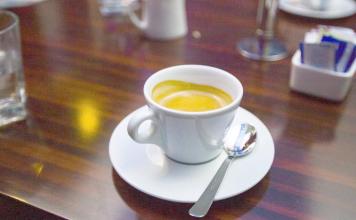The difference of coffee beans treated with Yejia snow coffee sunbathing water and honey washing
The difference of coffee beans treated with Yejia snow coffee sunbathing water and honey washing
The light time of raw coffee beans treated with yellow honey was the longest. Longer light means higher heat, so the coffee can be dried within a week. In general, the drying time of coffee depends on the local climate, temperature and humidity.
The drying time of raw coffee beans treated with red honey is 2-3 weeks, usually due to weather or placed in a dark place. If the weather is clear, the grower will block part of the sun to reduce the sunshine time.
The coffee beans treated with black honey were left in the dark for the longest time and the shorter the light time. This coffee should be dried for at least two weeks. The black honey treatment of raw coffee beans is the most complex and the labor cost is the highest, so the price is the most expensive.
The flavor of sun Yega is much more than that of water washing, the most obvious is the aroma of red wine, if beans and baking are all right, it is simply delicious in the world--
Mellow than water washing, the front may be a little bitter, the back of a strong fruit flavor, the key is that there is no lack of Yega Xuefei unique fruit acid.
Brazilian coffee fields are endless and are mostly harvested mechanically in order to meet the economic benefits. When 75% of the coffee fruit in the coffee garden turns red, mechanical harvesting is started, followed by the same pre-washing operation, which is moved into the sink to remove floating beans, sift out the sunken beans, and then use a large pulp screening machine to dig out the pulp and remove the pods covered with pectin. The next stage is separate from the washing method: the sticky pods do not need to be moved into the tank to ferment, but to the outdoor bean drying farm. Because of the dry climate in Brazil, the sticky pectin on the pods will harden in about a day or so. Then use a large number of manpower to turn up and down, so that the pods dry evenly inside and outside, so as not to return to moisture and stink. For about two to three days, with the help of the natural forces of sunlight and dry climate, the pods can achieve a certain degree of dehydration. Then further dry with a dryer, the water content is reduced to 10.5%, and the pods are stored in a special container for about 10 days to further mature, in order to stabilize the quality, remove sheep skins (pods) before export, remove coffee beans, and pack them in stages. The adhesion of the mucous membrane is very strong and is not easy to remove. It must be placed in the slot for about 18-36 hours to make it alcohol and decompose the mucous membrane. There are two methods of fermentation.

Important Notice :
前街咖啡 FrontStreet Coffee has moved to new addredd:
FrontStreet Coffee Address: 315,Donghua East Road,GuangZhou
Tel:020 38364473
- Prev

What brewing method is suitable for Manning coffee growth environment characteristics
What kind of brewing method is suitable for Manning coffee to grow in the environment characteristics: the granules of Mantenin coffee beans are larger, the quality of beans is hard, and defects are easy to appear in the process of planting. After harvest, it is usually subject to strict manual selection, if the control process is not strict enough, it is easy to cause a mixture of good and bad quality, and different baking degrees will directly affect the taste, so it has become a controversial single product. Mante.
- Next

Introduction to the taste of the variety treatment method in the grinding scale production area of Brazilian Hilado coffee
Brazilian Coffee Coffee Grinding scale Regional Variety treatment Taste introduction at present the synonym of Brazilian Syrador coffee and high quality coffee has been linked. In 2005, the high-quality Arabica coffee harvested in Syrador was officially certified as Syrador coffee by the Pakistani government according to international standards and claimed to be recognized. And the region wants to use the title of Syrador.
Related
- Detailed explanation of Jadeite planting Land in Panamanian Jadeite Manor introduction to the grading system of Jadeite competitive bidding, Red bid, Green bid and Rose Summer
- Story of Coffee planting in Brenka region of Costa Rica Stonehenge Manor anaerobic heavy honey treatment of flavor mouth
- What's on the barrel of Blue Mountain Coffee beans?
- Can American coffee also pull flowers? How to use hot American style to pull out a good-looking pattern?
- Can you make a cold extract with coffee beans? What is the right proportion for cold-extracted coffee formula?
- Indonesian PWN Gold Mandrine Coffee Origin Features Flavor How to Chong? Mandolin coffee is American.
- A brief introduction to the flavor characteristics of Brazilian yellow bourbon coffee beans
- What is the effect of different water quality on the flavor of cold-extracted coffee? What kind of water is best for brewing coffee?
- Why do you think of Rose Summer whenever you mention Panamanian coffee?
- Introduction to the characteristics of authentic blue mountain coffee bean producing areas? What is the CIB Coffee Authority in Jamaica?

